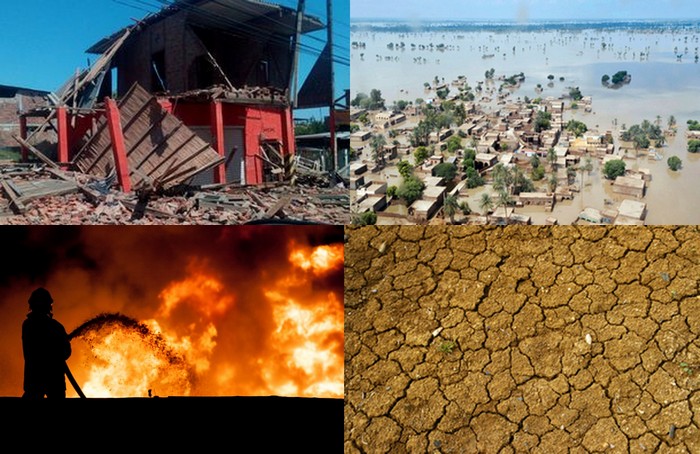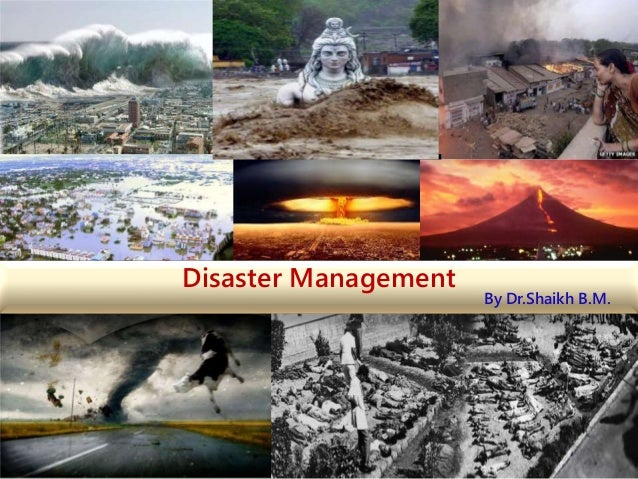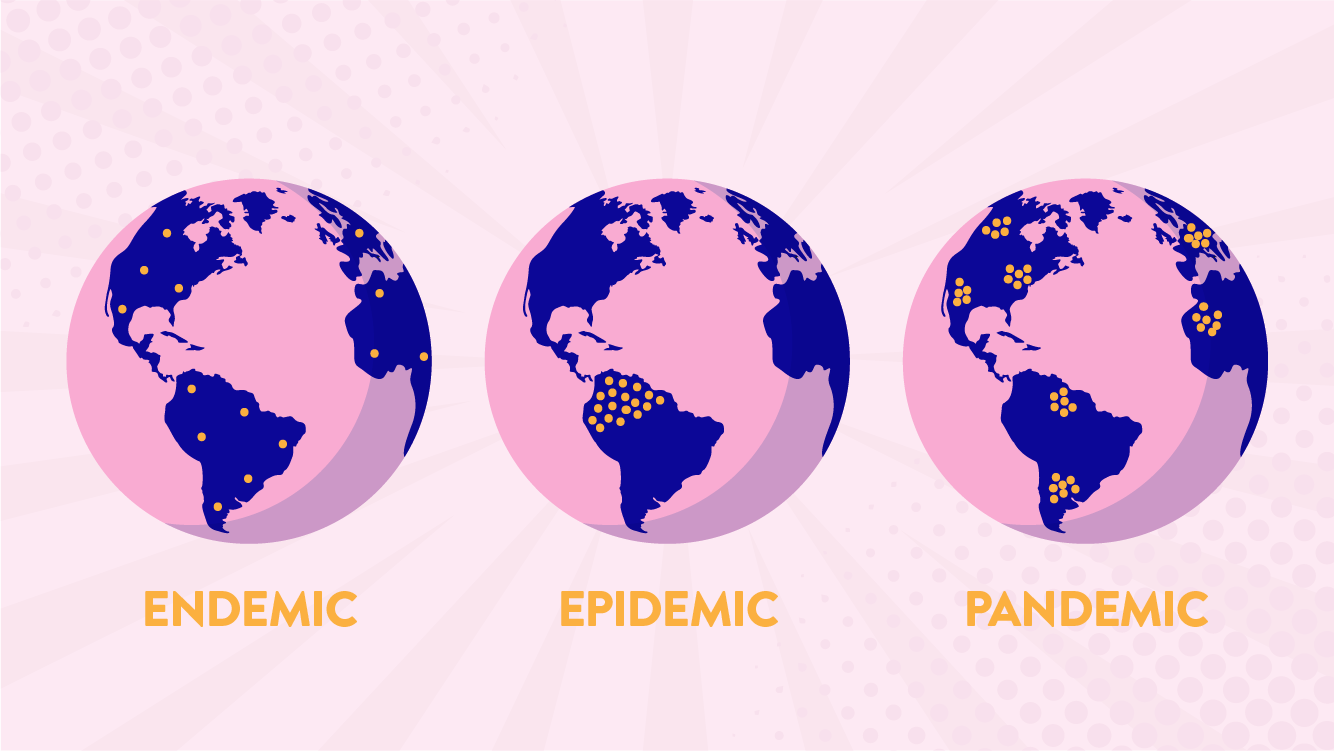DISASTERS AND DISEASES
What are Disasters?
A disaster is a natural or man-made event that causes damage to life, property, livelihood or industry often resulting in permanent changes to human societies.
What are Diseases?
A disease is a particular abnormal condition that negatively affects the structure or function of all or part of an organism or is known to be medical conditions that are associated with specific symptoms and signs.

Now, why I am writing these two together? Do these have any kind of relation? Are these good for us? Do we like these? Are these beneficial and necessary for us? Let's see....
Both disasters and diseases effects people very badly and even in worst case scenario it kills a lot of people and those who might survive might lose their family members and might lose all the reasons to live. Disasters and few diseases are incurable i.e. we can't do anything against them and wherever they occurs they destroy the economy as well. Few deadliest examples are Earthquakes, Tsunami, Volcanic Eruption, Cancer and AIDS. Against these forces even with modern science in our hands we are helpless and we can't do anything against them till now.

Occurrence:
Now why do they occur. To me, even this has a connection. According to me both have a direct connection to Mother Nature. Now most of the diseases occur because of the extreme pollution and deforestation because of which both animals and human-beings don't get fresh air and water and thus the disturbance caused in the balance of nature makes Mother Nature very angry as she sees animals losing their homes and food source and dying and therefore, to express her anger she brings in he disasters and proves that no matter how advanced human beings get the force of nature will always be superior.
Day-by-day Science and technology is advancing although people are dying also at an earlier age compared to the previous times. Earlier people used to live till an age of 80-85 years and now people just hope to survive till 70-75 and even if they do they be very sick and unhealthy at their last stage. But with so advanced medicines and healthcare we should be really healthy even at the older ages. This is because of the pollution outside and lack of freshness that nature and greenery used to provide human race earlier. Now we are in desperate need of schools, colleges, factories, offices, industries, hospitals etc. and to gather space for that we are continuously cutting trees and are not doing 'afforestation' and in turn disturbing the balance of nature.

Now till date we have already witnessed the force of nature many times:
Top 20 Pandemics and Epidemics
- Prehistoric epidemic: Circa 3000 B.C.
- Plague of Athens: 430 B.C.
- Antonine Plague: A.D. 165-180
- Plague of Cyprian: A.D. 250-271
- Plague of Justinian: A.D. 541-542
- The Black Death: 1346-1353
- Cocoliztli Epidemic: 1545-1548
- American Plagues: 16th Century
- Great Plague of London: 1665-1666
- Great Plague of Marseille: 1720-1723
- Russian Plague: 1770-1772
- Philadelphia Yellow Fever Epidemic: 1793
- Flu Pandemic: 1889-1890
- American Polio Epidemic: 1916
- Spanish Flu: 1918-1920
- Asian Flu: 1957-1958
- AIDS pandemic and epidemic: 1981-present day
- H1N1 Swine Flu Pandemic: 2009-2010
- West African Ebola Epidemic: 2014-2016
- Zika Virus Epidemic: 2015-prsent day
:max_bytes(150000):strip_icc()/difference-between-epidemic-and-pandemic-2615168-01-c829c2e4591f47f9a3e5cd39687be4a7.png)
Top Natural Disasters
- 526 Antioch Earthquake
- 1556 Shaanxi Earthquake
- 1839 Indian Cyclone/1881 Haiphong Typhoon
- The 1887 Yellow River Flood
- 1920 Hai yuan Earthquake
- 1923 Great Kanto Earthquake
- 1931 China Floods
- 1949 Eastern Guatemalan Floods
- 1951 Manchuria Flood
- 1952 Severo-Kurilsk Earthquake
- 1953 Japan Floods
- 1954 Yangtze Floods
- 1956 Typhoon Wanda
- 1958 and 59 Typhoon Ida and Vera
- 1964 Tropical Storm Joan
- 1967 Pradip Cyclone
- 1969 Yuanjiang earthquake
- The 1970 Bhola Cyclone
- 1971 Hanoi and red River Delta Flood
- 1973 Flores Cyclone
- 1974 Hurricane Fifi-Orlene
- 1975 Typhoon Nina
- 1976 Tangshan Earthquake
- 1977 Andhra-Pradesh cyclone
- 1979 Hurricane David
- 1984 Typhoon Ike
- 1986 Lake Nyos Disaster
- 1987 Ecuador Earthquake
- 1988 Armenian Earthquake
- 1989 Sichuan Flood
- 1991 Bangladesh Cyclone
- 1993 Latur Earthquake
- 1994 Paez River Earthquake
- 1995 Great Hanshin Earthquake
- 2001 Gujrat Earthquake
- 2002 Indian Heat Wave
- 2003 European Heat Wave
- 2004 Indian Ocean Earthquake and Tsunami
- 2008 Cyclone Nargis
- 2009 Sumatra Earthquake
- 2010 Haiti Quake
- 2011 Tohoku Earthquake and Tsunami
- 2012 Typhoon Bopha
- 2013 Typhoon Haiyan
- 2015 Nepal Earthquake
- 2016 Ecuador Earthquake
- 2017 Hurricane Maria
- 2018 Sulawesi Earthquake and Tsunami
- 2019 Cyclone Idai
- 2020 East African Floods


Time to time people have witnessed different pandemics, epidemics and disasters and no matter how much experience we have gathered we can never be ready to face them. Now even in this modern times we have technology which can only make us aware of the disasters and we can only be prepared for them by evacuating people from the most impactable areas and volunteers and helpers can be ready to provide service to people although no one can give the actual data about how dangerous these factors can be unless they hit us and make their mark.

We have advanced weapons, healthcare, communication, transport and technology although even with these we cant determine the arrival of pandemics and epidemics. Like the current example of coronavirus where we got the news that this disease has started in Wuhan and is spreading. We were not that scared at the beginning but just within a few months it became an epidemic and now each and everyone is scared. Now with such technical power in our hand we could easily expect that no matter which disease comes up, within a few days we can either kill the virus or we can develop an antidote but the whole world is still witnessing the might of corona.

Even the earlier pandemics and epidemics came and spread like anything and stood for a long time and people for a long period of time were totally helpless and were dying, hoping for the arrival of a medicine. After a huge time period some antidote came up and slowly reduced the effect of the pandemic/epidemic but already it had killed lots of people and still now in case of coronavirus history is being repeated. Its spreading and killing people and people are only hoping for the arrival of the antidote.
Now its a common term that technology is getting advancing day-by-day so can we say that pandemics/epidemics are also advancing themselves according to the times and are ready to face the technology. Still, scientists of all over the world are struggling even with the best of machines under their control.

Again we are witnessing earthquakes in different places now. The reason for this lies in Earth's distant past, when the Indian tectonic plate smashed into the Eurasian plate with such force that the crust folded upwards around the area of collision, forming the Himalayan mountain range. The 2020 Caribbean Earthquake is the largest earthquake in the Caribbean since 1946. There is a list of earthquakes occurring and experts are estimating that more places are yet to be hit.

So can we say that these two factors are comes up one after the another and we can also say that these two are the best weapons of nature and the most dangerous duo that Mother Nature has against humanity and these had, is and will show up every time when humanity crosses its limit and disturb the balance of nature and according to me no matter how much we get get advanced technology wise we will always fall short in front of nature's true power and the best way to stop them is to love nature and maintain the balance between Nature and Humanity.

Comments
Post a Comment
I am always open for questions and if anyone has any doubt or suggestions,please let me know.